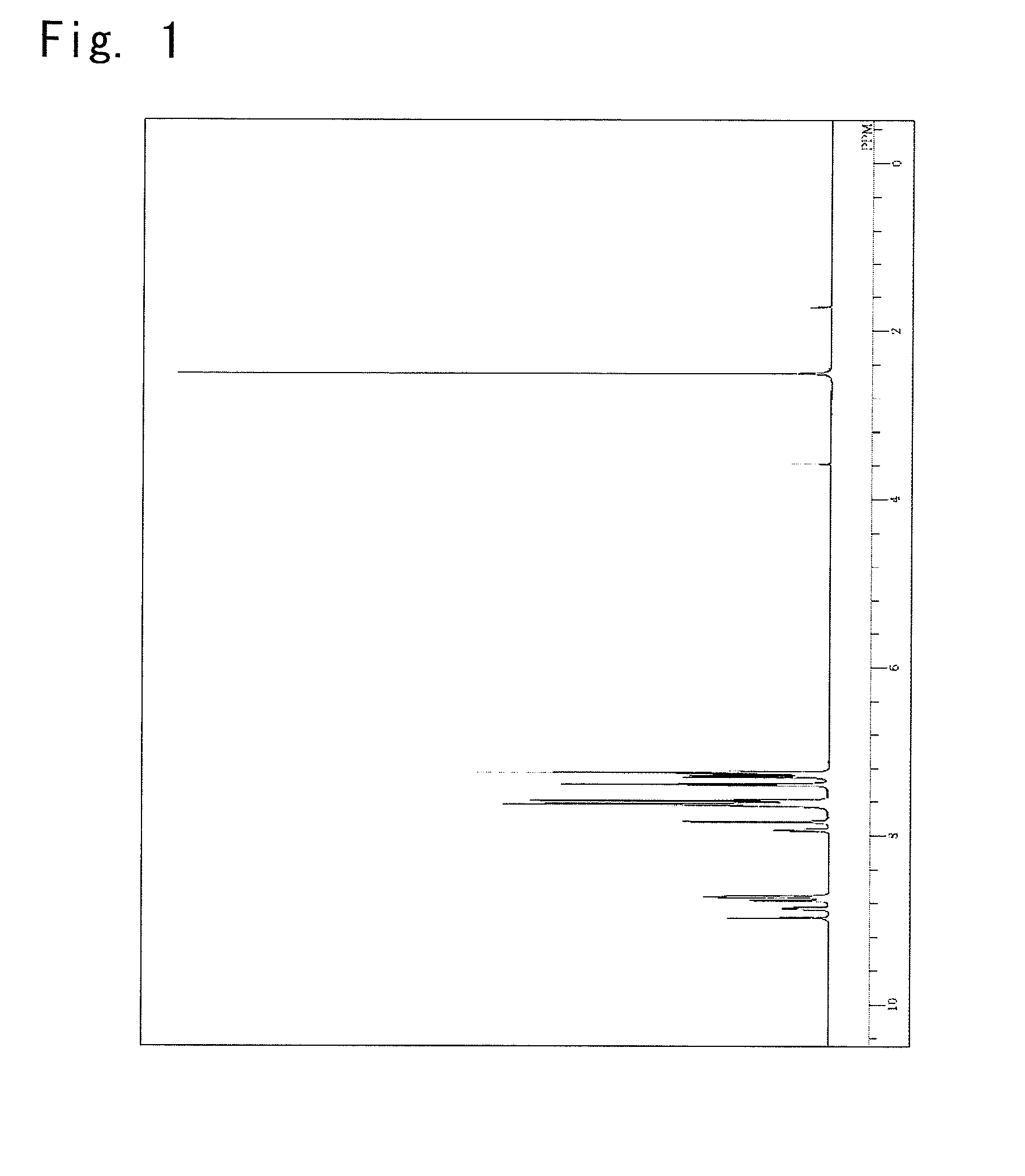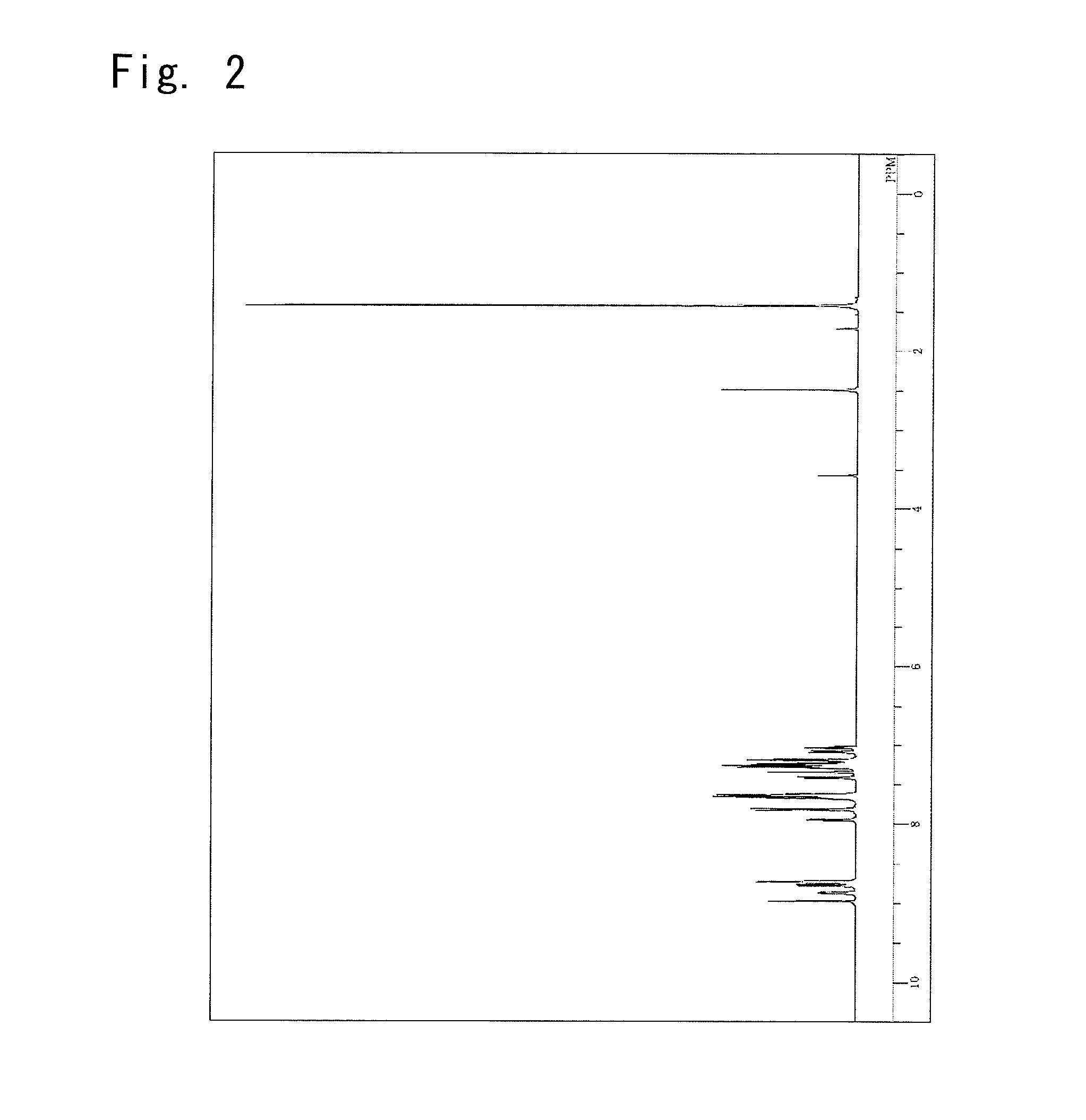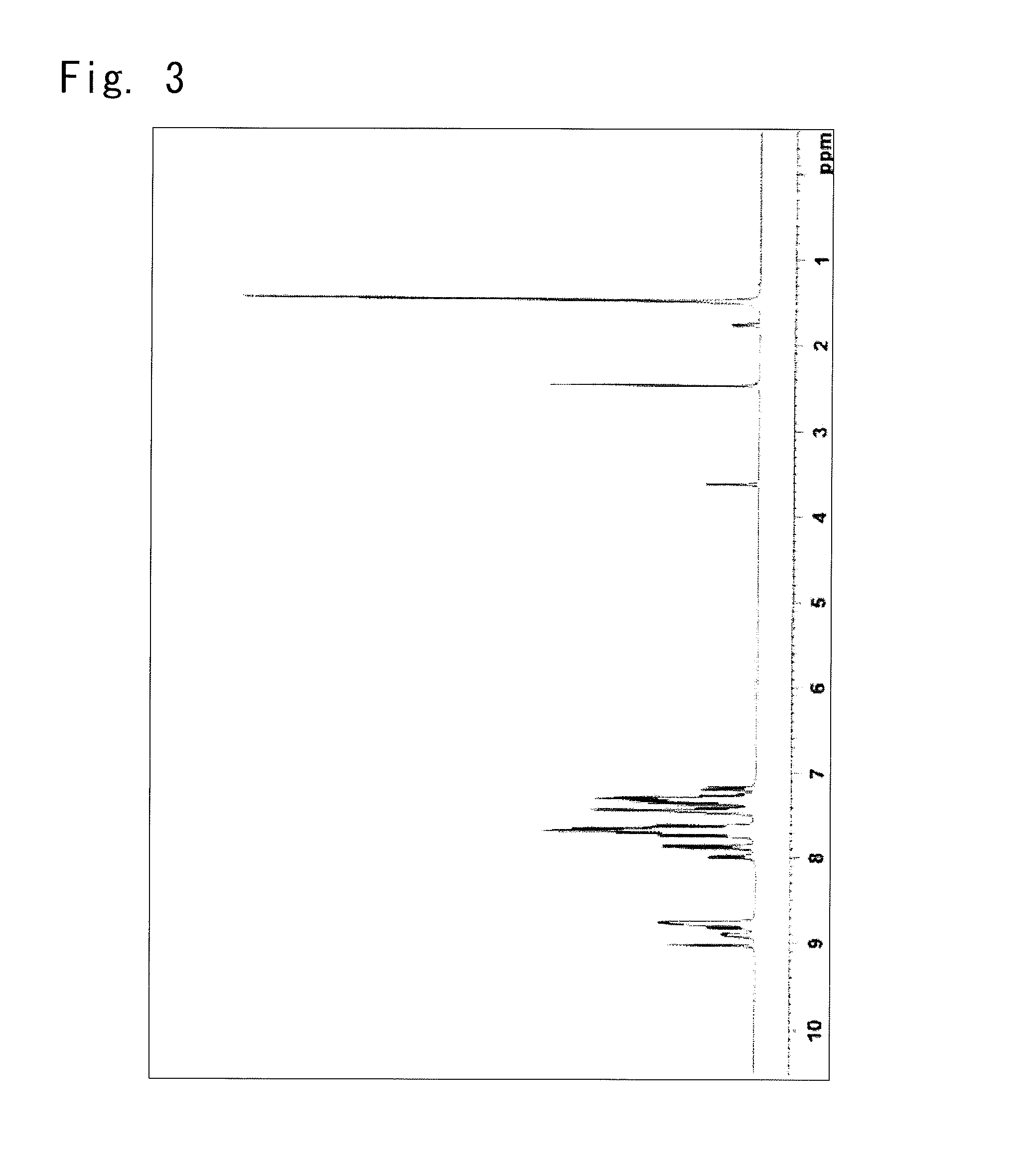Novel triphenylene derivatives and organic electroluminescent devices using said derivatives
- Summary
- Abstract
- Description
- Claims
- Application Information
AI Technical Summary
Benefits of technology
Problems solved by technology
Method used
Image
Examples
example 1
Synthesis of a bis(biphenyl-4-yl)-{4-(triphenylene-2-yl) phenyl}amine
Synthesis of a Compound 66
[0156]
Bis(biphenyl-4-yl)-(4-bromophenyl)amine3.85g,4,4,5,5-Tetramethyl-2-(triphenylene-2-yl)-2.83g,[1,3,2]dioxaboraneToluene59ml,Ethanol15ml, and2M Potassium carbonate aqueous solution6ml,
were put into a reaction vessel in a nitrogen atmosphere, and to which a nitrogen gas was flown for 30 minutes while being irradiated with ultrasonic waves.
[0157]Next, 0.19 g of a tetrakis(triphenylphosphine) palladium was added thereto, and the mixture was heated and stirred at 72° C. for 4.5 hours. After left to cool down to room temperature, 50 ml of methanol was added thereto, and the precipitated crude product was picked up by filtration.
[0158]The crude product was dissolved in 300 ml of toluene, refined by adsorption by using 7.5 g of silica gel, concentrated under reduced pressure and, thereafter, the crystals thereof were precipitated by using a mixed solvent of 1,2-dichlorobenzene and toluene. Up...
example 2
Synthesis of a (9,9-dimethyl-9H-fluorene-2-yl)-phenyl-{4-(triphenylene-2-yl)phenyl}amine
Synthesis of a Compound 15
[0170]
4-Bromophenyl(9,9-dimethyl-9H-fluorene-2-yl)-3.89g,phenylamine4,4,5,5-Tetramethyl-2-(triphenylene-2-yl)-3.08g,[1,3,2]dioxaboraneToluene59ml,Ethanol15ml, and2M Potassium carbonate aqueous solution6.5ml,
were put into the reaction vessel in the nitrogen atmosphere, and to which the nitrogen gas was flown for 30 minutes while being irradiated with ultrasonic waves.
[0171]Next, 0.21 g of the tetrakis(triphenylphosphine) palladium was added thereto, and the mixture was heated and stirred at 72° C. for 5.5 hours. After left to cool down to room temperature, 50 ml of water and 30 ml of toluene were added thereto, and the organic layer was picked up by the separating operation. The organic layer was dried on the anhydrous magnesium sulfate and was, thereafter, concentrated under reduced pressure to obtain a brown crude product.
[0172]The crude product was dissolved in 250 ml ...
example 3
Synthesis of a (biphenyl-4-yl)-(9,9-dimethyl-9H-fluorene-2-yl)-{4-(triphenylene-2-yl)phenyl}amine
Synthesis of a Compound 67
[0188]
(Biphenyl-4-yl)-(9,9-dimethyl-9H-17.9g,fluorene-2-yl) Amine2-(4-Bromophenyl)triphenylene19.0g,Tert-butoxysodium5.72g, andToluene200ml,
were put into the reaction vessel in the nitrogen atmosphere, and to which the nitrogen gas was flown for 30 minutes while being irradiated with ultrasonic waves.
[0189]Next,
Palladium acetate0.22 g andToluene solution of tris-tert-butylphosphine 1.9 ml,(50% w / v)
were added thereto, and the mixture was heated and stirred at 80° C. for 1.5 hours. After left to cool down to room temperature, 100 ml of water and 100 ml of toluene were added thereto, and the organic layer was picked up by the separating operation. The organic layer was dried on the anhydrous magnesium sulfate and was, thereafter, concentrated under reduced pressure to obtain a brown crude product.
[0190]The crude product was dissolved in 750 ml of toluene, refined b...
PUM
| Property | Measurement | Unit |
|---|---|---|
| Structure | aaaaa | aaaaa |
| Aromaticity | aaaaa | aaaaa |
Abstract
Description
Claims
Application Information
 Login to View More
Login to View More - R&D
- Intellectual Property
- Life Sciences
- Materials
- Tech Scout
- Unparalleled Data Quality
- Higher Quality Content
- 60% Fewer Hallucinations
Browse by: Latest US Patents, China's latest patents, Technical Efficacy Thesaurus, Application Domain, Technology Topic, Popular Technical Reports.
© 2025 PatSnap. All rights reserved.Legal|Privacy policy|Modern Slavery Act Transparency Statement|Sitemap|About US| Contact US: help@patsnap.com



